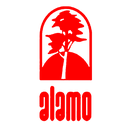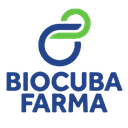Executive Secretary

VIII International Symposium on Chemistry and Pharmaceutical Sciences
VIII Conference "Chemical Sciences"
Abstract
The work evaluates the possible identification of food sources in pre-Columbian aborigines using chemometric techniques applied to the concentration of trace elements indicating food sources in teeth. Samples from 5 sites in the north-central region of Cuba. The Cayo Salina cave, in general, gives the highest values of elements indicative of the herbivorous and carnivorous diet, presumably of marine origin. Inland in Solapa de Los Muertos, copper was higher, which this site housed the so-called hunters, with a diet of red meat belonging to the same sociocultural group and type of appropriation and possibly not temporally linked. In Solapa de Los Muertos and La Necrópolis they present lower values for the herbivorous diet. Through the teeth of the same jaw, it is stated that there was a change in the eating pattern of said individual, from herbivore to carnivore. Cluster analysis, clusters are separated differently from PCA and Biplot PCA and K-Means graph, where all the included variables prove to be good predictors. A group that we call intermediate zone appears in hierarchical cluster analysis, and is located in The Necropolis in correspondence with what is shown by the combination of the k-Medoids with the PAM algorithm. It is concluded that the type of diet used by each of the individuals is deduced and allows the identification of cultural trends between sites analyzed with statistical techniques. Pearson's analyzes confirm the different degrees of specialization in obtaining diets.
Resumen
En el trabajo se evalúa la posible identificación de fuentes alimentarias en aborígenes precolombinos empleando técnicas quimiométricas aplicadas a la concentración de oligoelementos indicadores de fuentes alimentarias en dientes. Las muestras de 5 sitios de la región centro-norte de Cuba. La cueva de Cayo Salina, en general, dan los valores más altos de elementos indicadores de la dieta herbívora y carnívora, presumiblemente de origen marino. En tierra adentro Solapa de Los Muertos, el cobre fue más alto, lo que este sitio albergaba a los llamados cazadores, con dieta en carnes rojas perteneciendo al mismo grupo sociocultural y tipo de apropiación y posiblemente no vinculados temporalmente. En Solapa de Los Muertos y La Necrópolis presentan valores más bajos para la dieta herbívora. A través del dientes de una misma mandíbula, se afirma que hubo un cambio en el patrón de alimentación de dicho individuo, de herbívoro y pasó a carnívoro. El análisis de conglomerados, los clusters se separan diferente al gráfico PCA y Biplot PCA y K-Means, donde todas las variables incluidas demuestran ser buenos predictores. Un grupo que llamamos zona intermedia aparece en análisis de conglomerados jerárquicos, y ubicándose en La Necrópolis en correspondencia con lo mostrado por la combinación de los k-Medoides con el algoritmo PAM. Se concluye que se deduce el tipo de dieta utilizada por cada uno de los individuos y permite identificar tendencias culturales entre sitios analizados con técnicas estadísticas. Los análisis de Pearson confirman los diferentes grados de especialización en obtención de dietas.
About The Speaker

MsC. Jorge B. de la Torre López

Trabajo como profesor en la universidad como profesor auxiliar y profesor consultante.
Discussion




